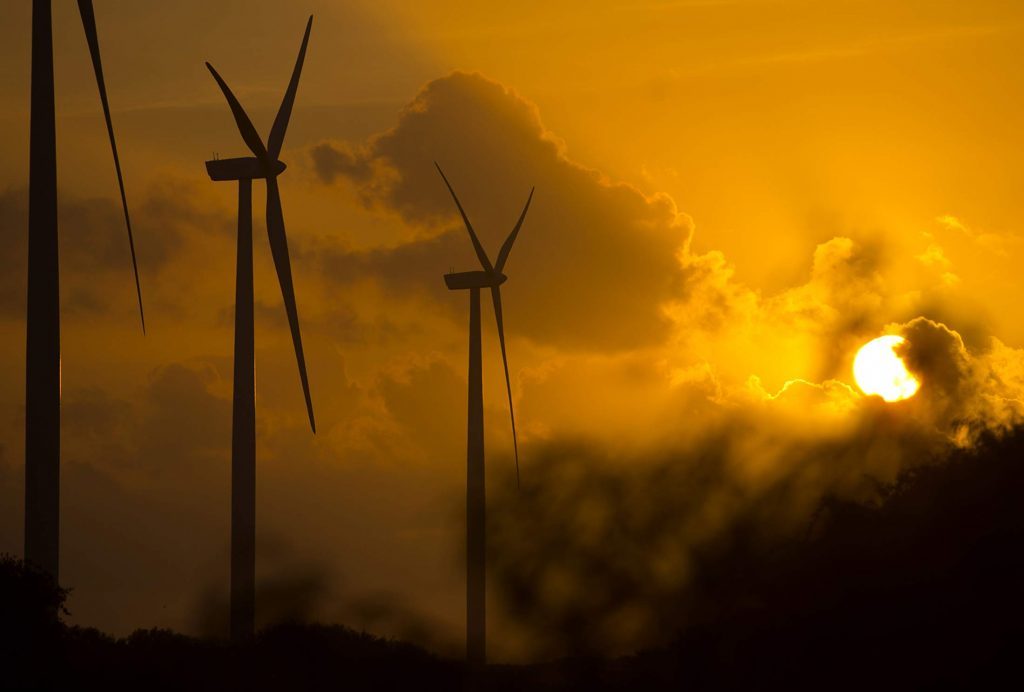
The cost of subsidies for new offshore windfarms has tumbled to record lows in the latest round of contracts being awarded for clean energy projects.
Prices for new offshore wind farms in the latest auction for the contracts – which guarantee a set price for power from schemes such as offshore windfarms – have fallen to £74.75 per megawatt hour for projects delivered in 2021/22 and £57.50 for projects in 2022/23.
Subsidies have fallen 50% since the last auction in 2015, and are down even further on the £150/MWh given to the first windfarms awarded contracts for subsidies.
The Government said the projects which had successfully bid for contracts were set to generate more than three gigawatts of electricity, enough to power 3.6 million homes.
Under the contracts for difference system, companies put in bids for the “strike” price they will be paid for electricity generated, with those submitting the lowest bids securing the deals.
Along with offshore windfarms, biomass and energy from waste plants have secured subsidies for low-carbon energy in the latest auction, with a total of 11 successful schemes.
The results show that the price of offshore wind has fallen well below that of nuclear, with the new Hinkley Point C power plant securing subsidies of £92.50/MWh in negotiations with the Government.
Costs of subsidies are down 50% on the last auction, whose results were announced in February 2015, in which offshore wind power projects won subsidies of between £114 and £120/MWh.
Minister for Energy and Industry Richard Harrington said: “We’ve placed clean growth at the heart of the Industrial Strategy to unlock opportunities across the country, while cutting carbon emissions.
“The offshore wind sector alone will invest £17.5 billion in the UK up to 2021 and thousands of new jobs in British businesses will be created by the projects announced today.”
He said the Government would be setting out ambitious proposals to seize industrial opportunities as the world moved to a low-carbon future, in its forthcoming “clean growth plan” which is due to be published in the autumn.
Bigger turbines, higher voltage cables and lower cost foundations, as well as the growth in the UK supply chain and the downturn in the oil and gas industry which has meant lower costs for vessels, have contributed to the falling prices.
The newest eight megawatt (MW) offshore turbines stand almost 200 metres (650ft) high, taller than London’s Gherkin, with 80m (260ft) long blades producing enough electricity to power a home for 29 hours with a single rotation.
Lawrence Slade, chief executive of energy industry body Energy UK, said: “Today’s exceptionally low results are further evidence of how the cost of clean energy is continuing to fall, and the move to a low-carbon future is delivered at the lowest cost to consumers.
“This shows what can be achieved by providing the necessary certainty for investment, which drives down the cost of decarbonisation, benefits customers and the wider economy, and creates highly skilled jobs and stimulates growth in rural economies.”
He said the industry had shown it could deliver, with more than a quarter of electricity generation now provided by renewables.
He called on the Government to set out ambitious long-term plans for continuing the trend in the clean growth plan, and provide certainty over future auctions which would allow all technologies to compete for contracts.
Caroline Lucas, co-leader of the Green Party, said the massive price drop for offshore wind should be the “nail in the coffin” for new nuclear.
She said: “While clean, green wind power has the potential to seriously cut people’s bills, the Government’s undying commitment to new nuclear risks locking us into sky-high prices for years to come.
“The Government should now commit to this technology – and scale up investment in offshore wind so that it becomes the backbone of British energy.”
McNeal said the “astounding” results of the auction meant that onshore and offshore wind were now cheaper than both new nuclear and gas.
He said: “Record-breaking cost reductions like the ones achieved by offshore wind are unprecedented for large energy infrastructure.
“Offshore wind developers have focused relentlessly on innovation, and the sector is investing £17.5 billion into the UK over the next four years whilst saving our consumers money.”
And he said: “Today’s results are further proof that innovation in the offshore wind industry will bring economic growth for the UK on an industrial scale.
“The Government can help us by continuing to hold fiercely competitive auctions for future projects, as it has promised, and by putting offshore wind at the heart of its upcoming Industrial Strategy.”
Recommended for you
